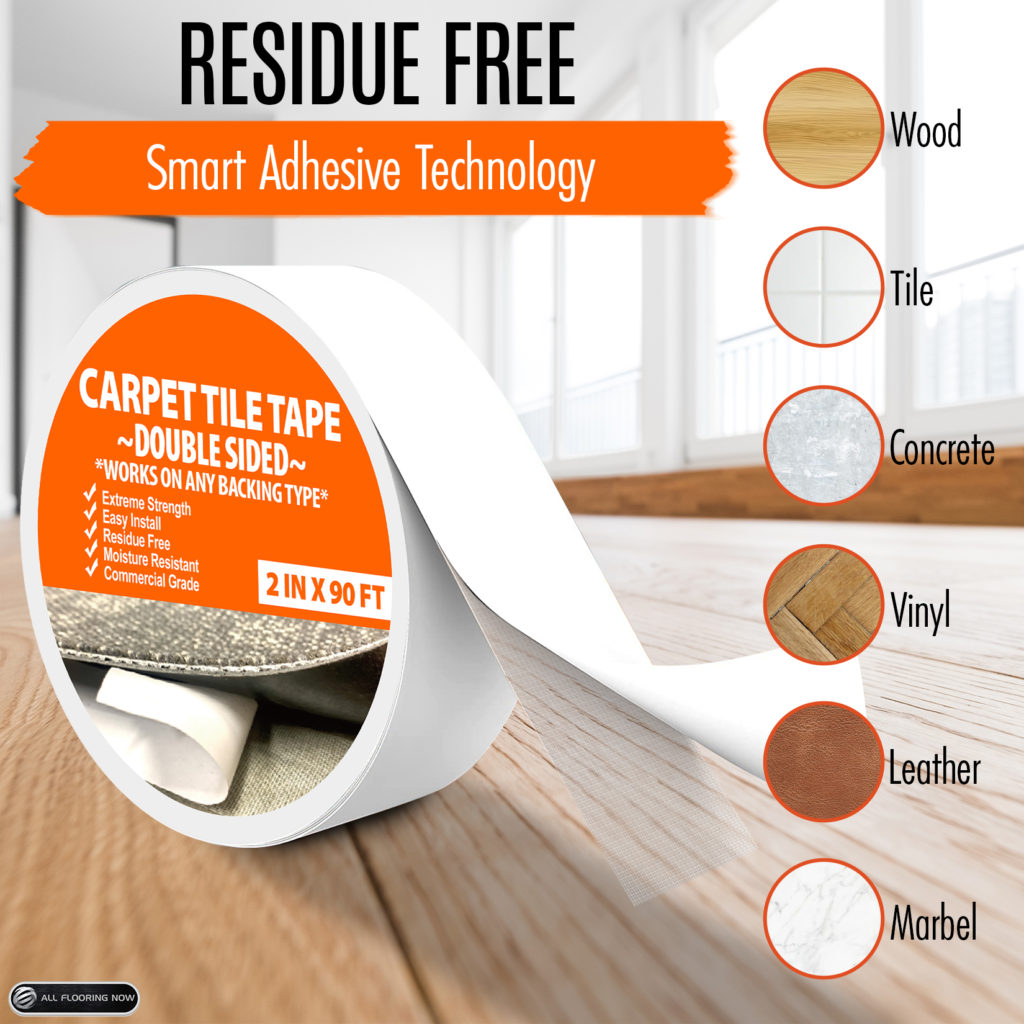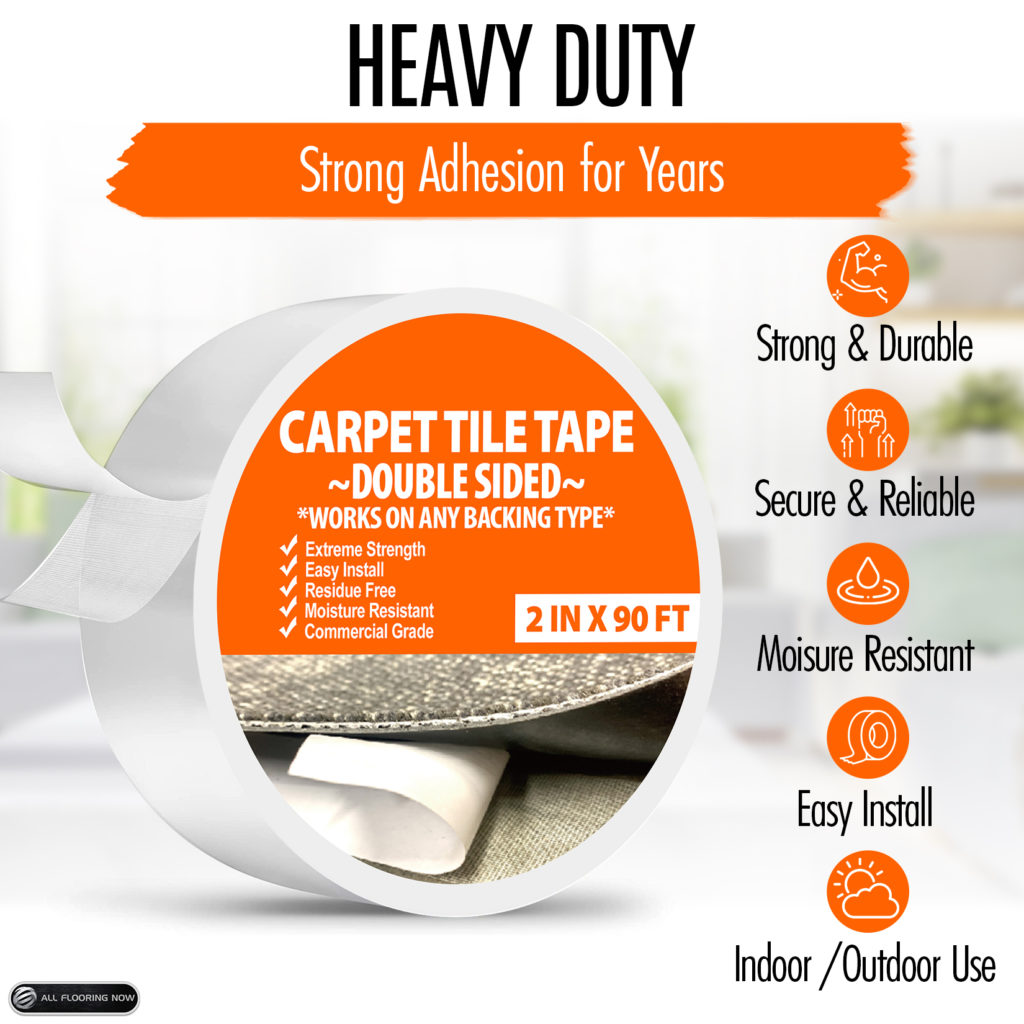Woodworking is a craft that demands precision, attention to detail, and the right tools. While many woodworking enthusiasts focus on saws, chisels, clamps, and other traditional equipment, there’s an unsung hero in the workshop that often goes unnoticed – double-sided carpet tape. This unassuming adhesive tape has found a unique and indispensable place in the world of woodworking, thanks to its versatility and ability to solve a variety of woodworking challenges.
In this article, we’ll delve into how double-sided carpet tape is an excellent addition to your woodworking toolkit. We’ll explore its various applications, advantages, and provide some practical tips on how to make the most of this humble yet powerful adhesive.
Understanding Double-Sided Carpet Tape
Before we dive into the woodworking applications of double-sided carpet tape, let’s understand what it is. Double-sided carpet tape, as the name suggests, is a type of adhesive tape with adhesive on both sides. It is typically used for securing carpets to various surfaces, creating a strong bond between the carpet and the floor.
The tape is designed to be durable and resistant to moisture, making it a reliable choice for securing carpets in high-traffic areas. Its strong adhesive properties, coupled with its ease of use, have made it a valuable tool in the world of woodworking.
- Temporary Workpiece Attachment
One of the primary uses of double-sided carpet tape in woodworking is to temporarily attach workpieces to a workbench or other surfaces. This is particularly handy when you need to secure a piece of wood for tasks such as sanding, routing, or cutting.
By applying strips of double-sided carpet tape to your workpiece and the workbench, you create a strong bond that holds the piece in place while you work on it. The tape prevents the wood from shifting or sliding during the operation, ensuring clean and accurate cuts or smooth sanding.
Unlike clamps or other traditional securing methods, double-sided carpet tape leaves no visible marks or impressions on the workpiece. This can be crucial when working with delicate wood species or when the final product requires a pristine surface.
- Laminating Multiple Layers
Woodworkers often need to laminate multiple layers of wood to create thicker panels or build up intricate designs. Double-sided carpet tape is an excellent choice for this task, as it provides a uniform bond across the entire surface.
To use double-sided carpet tape for laminating, apply strips of the tape to one side of each wood layer. Press the layers together firmly, and the tape’s strong adhesive will create a secure bond between the pieces. This method ensures that the layers are aligned precisely, resulting in a flat, smooth, and well-bonded composite.
Moreover, because the tape adheres uniformly, it prevents air bubbles or gaps from forming between the layers, which can be an issue when using liquid adhesives. This results in a stronger, more reliable bond.
- Templates and Patterns
Woodworking often involves the use of templates and patterns to guide cuts and shape wood accurately. Double-sided carpet tape can be a valuable aid when attaching templates to workpieces. By affixing the template with double-sided carpet tape, you can ensure that it stays securely in place while you work, preventing any potential misalignment.
The tape’s secure adhesion keeps the template from shifting during cutting, routing, or shaping, which is crucial for achieving precise results. Once you’re done, the tape can be easily removed without leaving any residue on the wood, preserving the clean surface for finishing.
- Inlay Work
Inlay work in woodworking involves the careful placement of one material (often a contrasting wood or other decorative material) into a recessed area of another material. Double-sided carpet tape can simplify the inlay process by helping to hold the inlay piece in place during the initial routing or carving.
To use double-sided carpet tape for inlay work, apply it to the back of the inlay piece and press it into the recessed area. This ensures that the inlay piece stays securely in position while you work on it. The tape’s strong adhesion prevents the inlay piece from moving or shifting, resulting in a precise and snug fit.
Advantages of Using Double-Sided Carpet Tape in Woodworking
Now that we’ve explored some of the woodworking applications of double-sided carpet tape, let’s discuss the numerous advantages it offers:
- No Clutter: Unlike clamps and screws, double-sided carpet tape leaves no visible marks, holes, or impressions on the wood, which is especially valuable when working with fine or exotic wood species.
- Precision: The strong and uniform bond provided by the tape ensures precise alignment of workpieces, templates, and inlay materials.
- Versatility: Double-sided carpet tape works well with a wide range of woodworking materials, including wood, plastic, and some metals.
- Easy Removal: The tape can be removed without damaging the wood surface or leaving sticky residue, making cleanup a breeze.
- Durability: It’s designed to withstand moisture and temperature fluctuations, making it suitable for long-term projects or items that may be exposed to the elements.
- Cost-Effective: Double-sided carpet tape is an affordable alternative to other securing methods, such as clamps and screws.
Practical Tips for Using Double-Sided Carpet Tape in Woodworking
To make the most of double-sided carpet tape in your woodworking projects, here are some practical tips:
- Surface Preparation: Ensure that both the workpiece and the surface you’re attaching it to are clean and free of dust or debris. This will help maximize the tape’s adhesion.
- Use the Right Amount: Apply the tape in strips or squares, ensuring that it covers a significant portion of the surface. Using too little tape may result in inadequate adhesion.
- Pressure Application: After applying the tape, press the workpiece firmly to the surface to activate the adhesive fully. A roller or even a mallet can be used to ensure a strong bond.
- Easy Removal: To remove the tape without leaving residue, gently peel it away at an angle, keeping it close to the surface. Using a heat gun on low settings can help soften the adhesive and make removal easier.
- Experiment and Practice: While double-sided carpet tape is versatile, it’s essential to experiment and practice its use on scrap wood before applying it to your final project.
Double-sided carpet tape might not be the first tool that comes to mind in the world of woodworking, but its versatile and adhesive properties make it a valuable addition to any woodworker’s toolkit. Whether you’re securing workpieces, laminating layers, attaching templates, or working on intricate inlay projects, this unassuming tape can simplify your tasks, improve precision, and help you achieve professional-quality results.
So, the next time you’re in your woodworking shop, don’t underestimate the power of double-sided carpet tape. It’s the invisible hand that ensures your projects stay in place and your craftsmanship shines through.





Leave a Reply